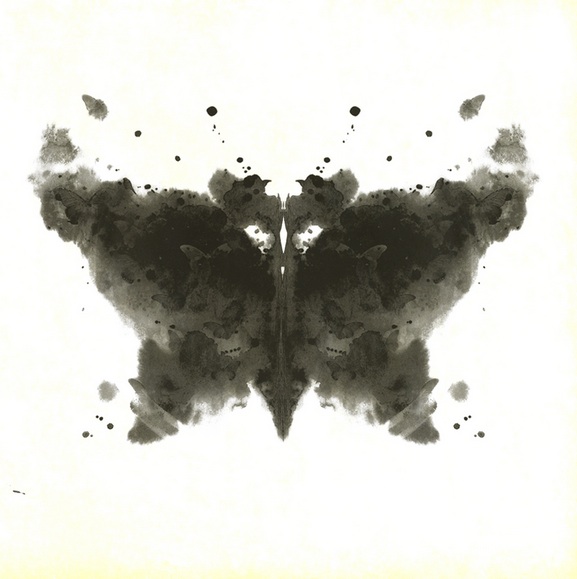Papillon is the intriguing new project from Discrepant label head Gonçalo F Cardoso. Inspired loosely by the French autobiographical adventure novel from 1969, Papillon’s eponymous first LP sonically depicts four divergent scenarios or concepts, from an escape to a ‘path of decay’, loosely dramatising these scenes using field recordings, sound effects and modular synthesisers.
This is therefore a phonographic record in the old sense. Its sonic fictions document and describe some lived reality whilst at the same time creating their own dramatic reality in turn. This layering of mediations produces a fertile tension between verisimilitude and theatricality in the music’s hearing. Papillon’s technique in this respect can be seen to be in the manner both of sound artists/recordists who sonically re-stage the sound marks of cities and jungles through high fidelity recordings, such as Hildegard Westerkamp and Chris Watson, and also of exoticists such as Les Baxter and Martin Denny, who fashioned imaginary sonic landscapes from stereotypically ‘exotic’ and primitive sounds put through a lounge jazz filter.
Papillon features Discrepant artist Cédric Stevens on modular synth on all of the album’s four tracks, alongside Cardoso. Other guests appear on two of the four tracks, from foley artist Julien Perrie and field recordist Kink Gong (Laurent Jeanneau) on ‘petite viande’, to drummer David Naan and Gong again on ‘la cavale des chinois’. These various personnel are pooled in deliberately jumbled, chaotic ways. The opening ‘un radeau dans une tombe’, for example, feels like a theatrical overture, an alluring but ramshackle chaos of sonic shards, morse code, warm crackle, and a softly droning synth ostinato winding around again and again to its bottom tone.
By contrast, the second track, ‘la cavale des chinois’, is full of detail and forthright event. Spilling water and distorted high synth tones introduce a tumbling narrative, where jungly night-echoes bleed into sung Chinese poetry programmed with terrible intent by the title of the track (which translates to ‘escape from the Chinese’). This scene gradually shifts into a more ambiguous setting, where distant square waves are splashed by water, before buzzing mid-range synth lines lead a path away from human threat. Sawed and glistening slivers of sound then beat into a drum tatoo, which portals the track to a bustly, finicky close. ‘la cavale’ makes good on the introductory promise of the opener, moving the album as it does into much more expansive, (ambiguously) pictorial territory full of glancing suggestion and weird flavour.
‘petite viande’ is more ambling. A tussle of sound nestles underneath the gentle sonic glints of the track’s surface. These include echoic sung praises, passing bicycles, a swarm of bees, some snatched conversation, and some smiting and burning: listeners are guided here along an audio-vivid stroll through a scorched, rudimentarily industrialised, possibly Middle Eastern city street. This stroll eventually detours into a drugged mosque for its (near-) closing movement, before finally alighting beside an uncannily-rendered, just out of touch pond. The sonic and pictorial variety here is striking.
The closing track, ‘le chemin de la pourriturre’, compares to ‘la cavale’ in its extension and dramatic power. A kosmiche-like organ chord runs throughout much of the piece, with simple, higher melodies bubbling to the foreground from time-to-time. These repeat for a minute or so, before disappearing into the sonic ether. Meanwhile, a gurgling, staticky grain pervades throughout, with echoed whispers and swooping, curling, piercing dive-bombs adding colour and flavour here and there.
The feeling throughout ‘le chemin’ is very much of moving through fantasy and delirium towards some undisclosed, possibly terrible fate. The ambiguity of this feeling speaks very much to the album’s strengths in multiplying possibility by refusing to narrate or to delineate precisely. Whilst a more straightforward, literal programme might have had its own advantages, Papillon actually derives much of its imaginative power from its embrace of dream-like logic and dreamed narrative scenarios. It works – even though its power might have increased with a little more extension of the material – because it is vague and ambiguous.
The embrace of dream logic on the album, in any case, is made all the more fruitful by Papillon’s appealing phonographic mix of field recording, musical performance, and sonic phantasm, a mix that lends itself especially well to the realisation of the kind of fantastical and weird adventurism clearly at the heart of the project.


